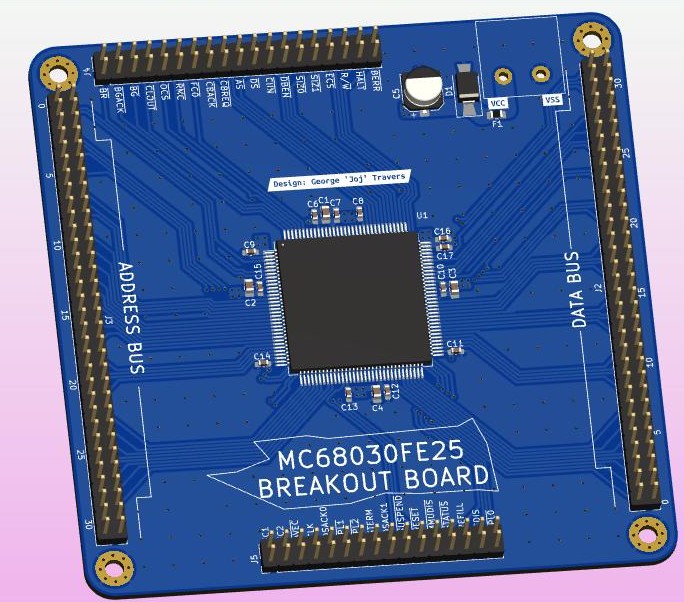I have grand plans to make a VMEbus based 68k computer. This will be a hard task with a variety of different electronic mediums to have fun learning and exploring. I love backplane based hardware, especially that used to control test setups and machinery, but they've always seemed expensive and intimidating. I'm looking at you PXIe. So I've been looking into alternatives that will be more practical for creation in my home lab. I'll write another post on the different backplane based solutions: CAMAC, NIM, S-100, etc; but in the end I've settled with VME/VXI and the processor architecture it was originally designed for: the Motorola 68000 series of microprocessors. There is so much scope in this project so I will be doing this for a while to come I'm sure.
Whilst I would like to have made the focus of this project Nuclear Instrumentation Modular (NIM) based systems, there isn't as much easy integration with computers and what information exists is hard to come buy and prohibitively expensive. That being said I have recently acquired a Canberra NIM Bin on eBay for £20! It comes with a chonking power supply off the rear of it, supplying the main voltages to the main bus, all of which where above and beyond the spec of NIM. I'm getting carried away here, this isn't the main topic of discussion and I'll follow up with my exploits of trying to source CHEAP NIM PGM connectors. Not to standard per say but enough for a hobbyist to create their own simple modules.
I'll try to outline some of my present ideas of what to get started on. I've already spent a lot of time looking in and around the topic but I think it'd be good to start from the ground up before outlining a spec for any VME processor modules or creating a rack. That means starting from a 68k single board computer (SBC). I have acquired some ICs that I can use for this including a slightly neutered 68008 but, most of all, I want to try get a minimal MC68030 running before adding on a MC68882 floating point unit (FPU). This would entail writing a low level operating system in C/ASM, something akin to a serial monitor program. Before I started into this project I have had some experience with 8051 and PIC18 ASM but nothing like this. Luckily there are plenty of people before me that have played around with the architecture, it was insanely popular for a time and runs on a lot of interesting vintage hardware such as my Macintosh Classic II. Once a SBC has been created, I want to try get some peripherals working, preferably on a VME compatible card that I can use to experiment.
Breakout Board
I laid this out on two layers which was quite an annoying task and not something I want to do again. Using JLCPCB however the cost incentive was too nice to avoid the challenge. The chip is a 136 pin QFP in a ceramic package and I hope that it is the legitimate thing. Once the boards arrive I can use them to verify this and distribute around my home as coasters (might as well at 10pcs for little extra cost). I have been stung before by grey market suppliers on eBay, Aliexpress, etc with fake chips very well disguised as the real deal. It's annoying but it is the price of working with no new chips, apart from the expensive descendants which often change the original 68k instruction set.

This brings me on to perhaps the most modern endeavour this project I hope will get on to. Utilising a modest FPGA and 68k softcore to remove the need for expensive and increasingly hard to get ICs. This has the added benefit of being reconfigurable, perhaps integrating an FPU directly onto one chip like the 68040 but most importantly it is a great learning experience!! There are already some cores available online so I will cross this bridge when I get some more into this whole project.
My backlog of JLCPCB orders is growing so more updates when these arrive.